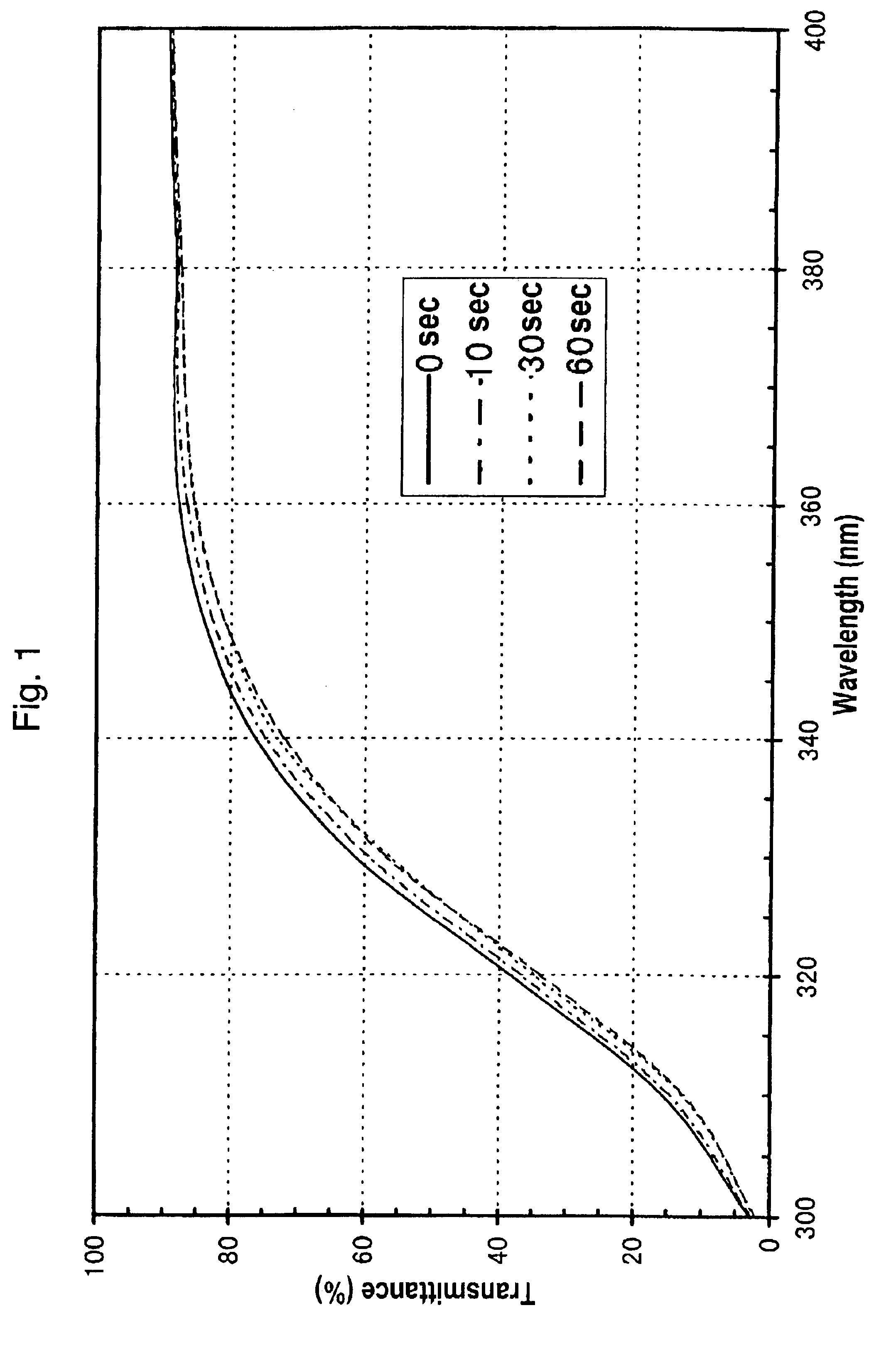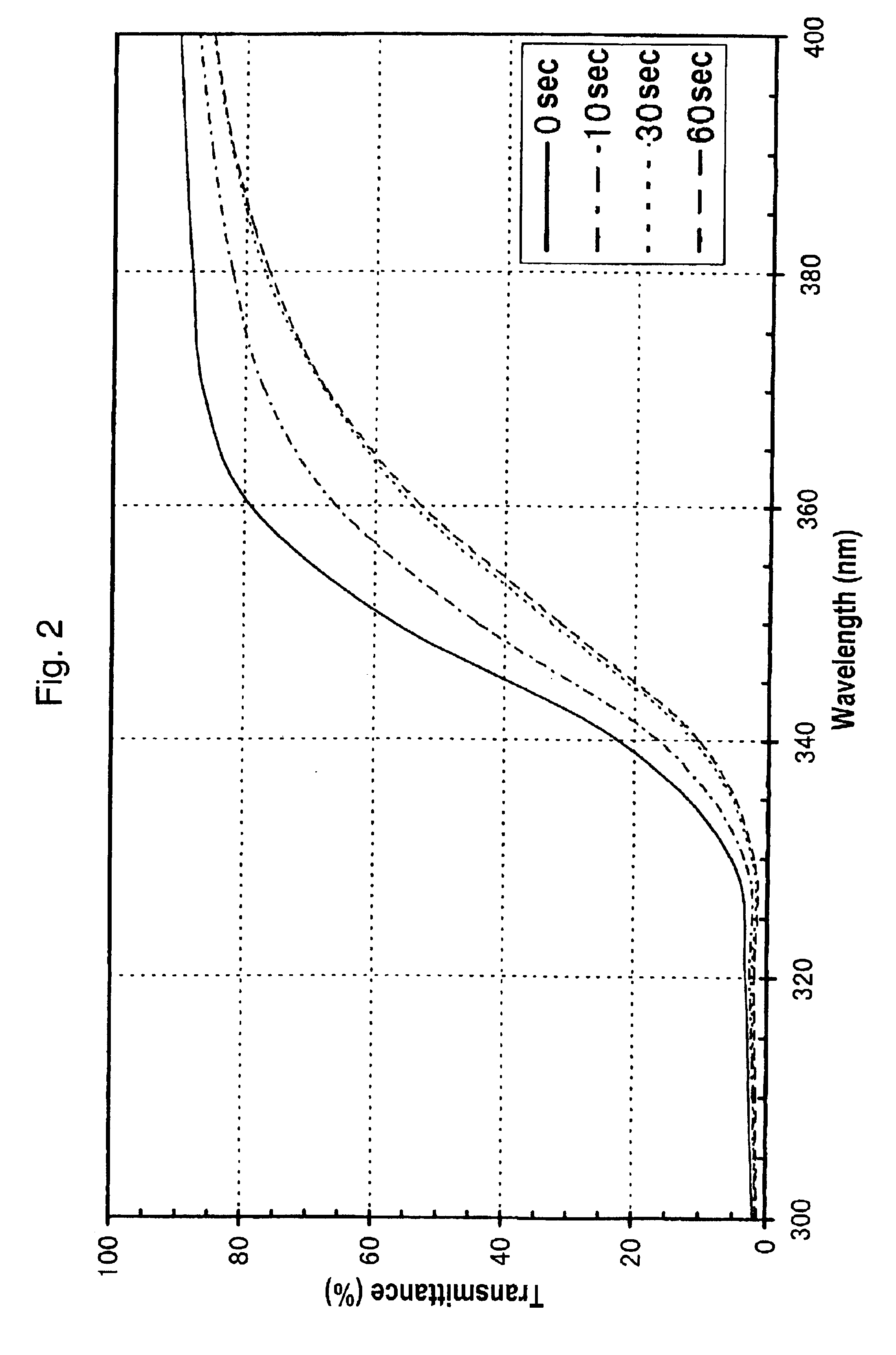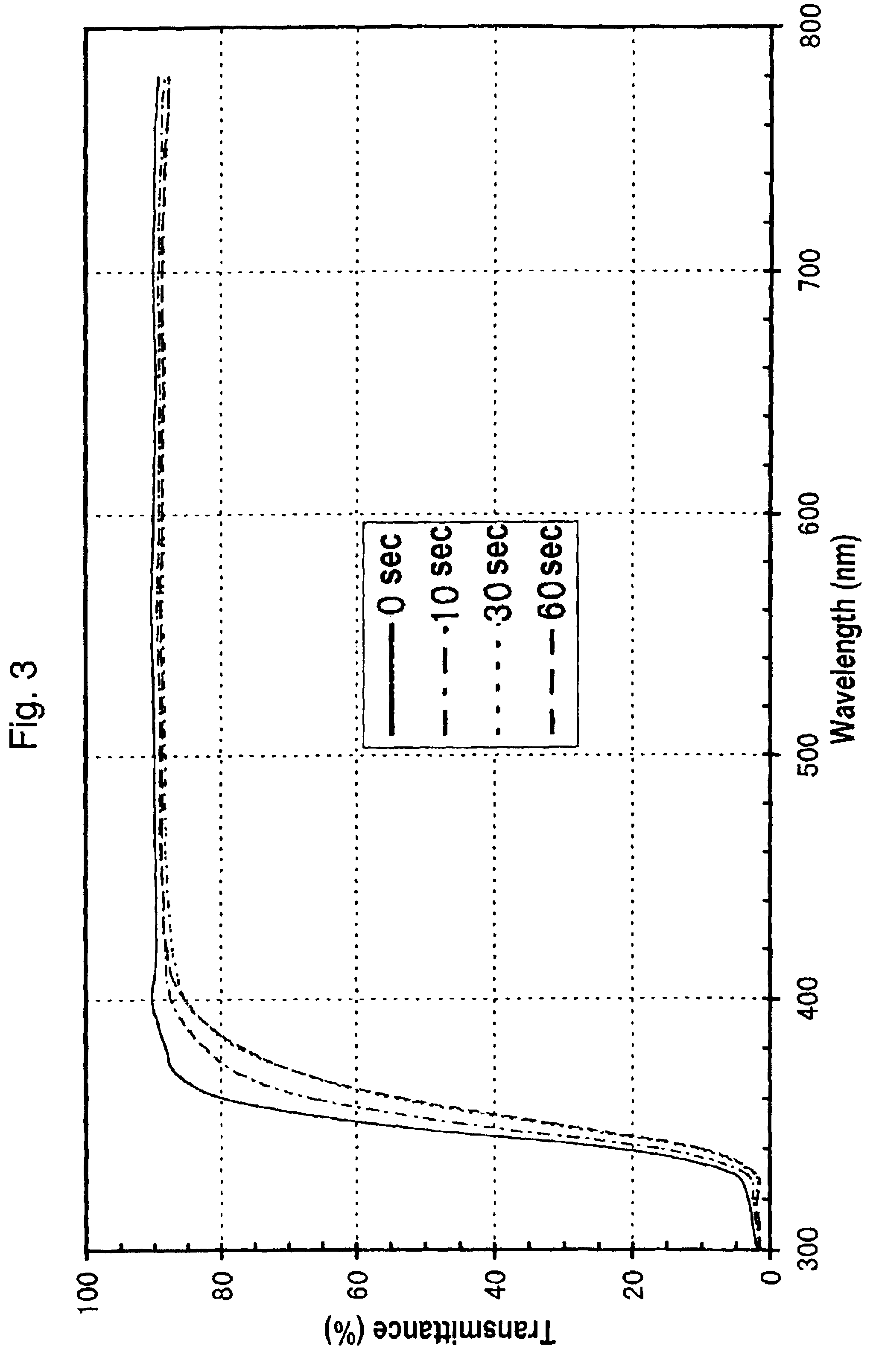Ultraviolet ray-absorbing, colorless and transparent soda-lime-silica glass
a sodalimesilica glass, colorless and transparent technology, applied in glass furnaces, glass making apparatus, manufacturing tools, etc., can solve the problems of coloration, deterioration of flavor, and affecting commercial value, and achieve excellent ultraviolet ray absorption
- Summary
- Abstract
- Description
- Claims
- Application Information
AI Technical Summary
Benefits of technology
Problems solved by technology
Method used
Image
Examples
examples
The present invention is described in further detail below with reference to a comparative example and examples. However, it is not intended that the present invention be limited to those examples.
In the comparative example and the examples, brightness (Y), dominant wavelength (λd), excitation purity (Pe) were calculated by the CIE method provided in JIS Z 8701 based on transmittance curves produced by measuring 3.5-mm thick, mirror-polished samples on a spectrophotometer [U-3410, manufactured by HITACHI, LTD.] and converting the values into those corresponding to 10-mm thick samples.
Compositional analysis of the glass was made on a X-ray fluorescence analyzer (3070: manufactured by RIGAKU). The ratio of Fe2O3 to FeO was calculated based on the absorbance measured at the wavelength of 1000 nm on the spectrophotometer.
example 1
A batch composition was prepared by weighing and mixing the following components.
Kemerton silica sand100parts by weightSoda ash27.5parts by weightLimestone27.5parts by weightSalt cake (sodium sulfate)1.4parts by weightCarbon (85% by weight of purity)0.06part by weightCeO20.12part by weightMnO2 (80% by weight of purity)0.035part by weightCo3O40.00015part by weight
The batch composition thus provided was introduced into a continuous tank furnace having a melting capacity of 150 t / day and melted at a glass melting temperature of 1450° C. for 38 hours, then passed through a feeder at 1270° C., molded and passed along a line equipped with a conventional annealing lehr to give bottles having a capacity of 300 mL.
Compositional analysis of this glass by X-ray fluorescence spectrometry (by spectrophotometry with regard to the proportion between Fe2O3 and FeO) gave the following proportions (% by weight) of components of the composition.
SiO271% Al2O32%CaO11.3%MgO0.15%Na2O12.5%K2O1.4%SO30.258%C...
examples 2-6
According to the blending proportions of batches shown in Table 1, glass bottles of Examples 2-6 were produced in the same manner as in Comparative Example and Example 1. The bottles were irradiated for 0, 10, 30 or 60 seconds in the same matter as described above, and 3.5-mm thick samples were prepared and their color values and transmittance were measured.
For each of the the glass, as well as for the glass of Comparative Example and Example 1, the blending proportion of batches and glass composition are shown collectively in Table 1, and color values and transmittance to light in Table 2, respectively.
TABLE 1Compara-tiveExam-Exam-Exam-Exam-Exam-Exam-Exampleple 1ple 2ple 3ple 4ple 5ple 6Batch blendingKemerton silica100100100100100100100proportionsand(part(s) bySoda ash27.527.527.527.527.527.527.5weight)Limestone27.527.527.527.527.527.527.5Salt cake1.41.41.41.41.41.41.4Carbon (85%)0.060.060.060.060.060.060.06CeO200.120.230.330.640.811.03MnO2 (80%)00.0350.0890.0940.0590.0540Se0.00200...
PUM
| Property | Measurement | Unit |
|---|---|---|
| wavelengths | aaaaa | aaaaa |
| transmittance | aaaaa | aaaaa |
| transmittance | aaaaa | aaaaa |
Abstract
Description
Claims
Application Information
 Login to View More
Login to View More - R&D
- Intellectual Property
- Life Sciences
- Materials
- Tech Scout
- Unparalleled Data Quality
- Higher Quality Content
- 60% Fewer Hallucinations
Browse by: Latest US Patents, China's latest patents, Technical Efficacy Thesaurus, Application Domain, Technology Topic, Popular Technical Reports.
© 2025 PatSnap. All rights reserved.Legal|Privacy policy|Modern Slavery Act Transparency Statement|Sitemap|About US| Contact US: help@patsnap.com



